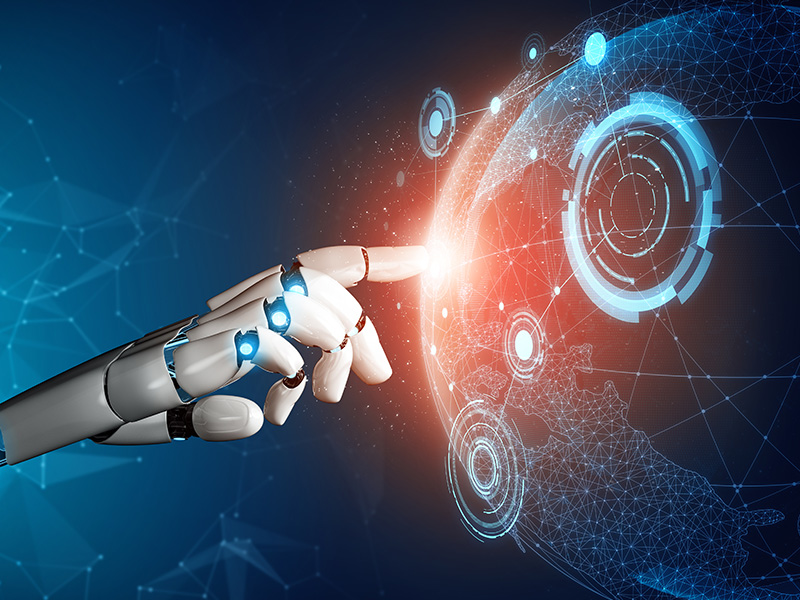Artificial Intelligence (AI) is often portrayed as a futuristic concept, but its roots go back to the dawn of life itself. The journey of AI can be broken down into four distinct periods: Animal Intelligence, Automated Intelligence, Artificial Intelligence, and Autonomous Intelligence. Each period represents a significant leap in the complexity and capability of intelligence, mirroring the evolutionary steps from simple life forms to machines that can think and act independently.
1. Animal Intelligence: The Dawn of Instinct
Long before humans conceptualized AI, nature had already engineered the most basic form of intelligence—Animal Intelligence. This form of intelligence is rooted in instinct and survival. Animals, through millions of years of evolution, developed the ability to react to their environment, find food, avoid predators, and reproduce. These behaviors are hardwired into their biology, requiring no conscious thought or learning.
The central nervous system, particularly the brain, became the hub for processing sensory information and coordinating responses. For example, a frog’s ability to catch flies with its tongue is a result of neural circuits that have evolved over time to perform specific tasks. This period in the evolution of intelligence highlights the importance of adaptation and the ability to respond to stimuli, albeit in a manner deeply embedded in the organism’s genetic code.
2. Automated Intelligence: The Rise of Machines
The Industrial Revolution marked the beginning of Automated Intelligence, where machines started to perform repetitive tasks that were previously done by humans. These machines, however, had no intelligence of their own; they were designed and programmed by humans to follow specific instructions. The Jacquard loom, invented in 1804, is a prime example. It used punch cards to control the weaving of complex patterns, a significant leap towards automation.
During this period, the concept of machines simulating human tasks took root. Charles Babbage’s Analytical Engine and Ada Lovelace’s early algorithms laid the groundwork for computational machines. These developments did not possess intelligence but were the precursors to more advanced systems. Automated Intelligence represents the era where human ingenuity began to create tools that could perform laborious and repetitive tasks with precision, freeing humans to focus on more complex problems.
3. Artificial Intelligence: The Birth of Smart Machines
The mid-20th century saw the birth of Artificial Intelligence as we know it today. This period began with the advent of digital computers and the realization that machines could be programmed to perform tasks that required human-like intelligence. The term “Artificial Intelligence” was coined in 1956 at the Dartmouth Conference, marking the official beginning of AI research.
Early AI efforts focused on symbolic reasoning and problem-solving. Programs like the Logic Theorist and ELIZA demonstrated that machines could mimic certain aspects of human thought and conversation. The development of machine learning algorithms in the 1980s and 1990s allowed computers to learn from data and improve their performance over time. AI systems began to excel in specific domains, such as chess with IBM’s Deep Blue defeating world champion Garry Kasparov in 1997.
Today, AI permeates various aspects of our lives, from virtual assistants like Siri and Alexa to sophisticated recommendation systems used by Netflix and Amazon. Machine learning, neural networks, and deep learning have enabled AI to process vast amounts of data, recognize patterns, and help make decisions with unprecedented accuracy.
4. Autonomous Intelligence: Machines That Think and Act Independently
The latest phase in the evolution of AI is Autonomous Intelligence. This period is characterized by systems that not only learn and adapt but also make decisions and act independently in complex environments. Autonomous Intelligence represents the pinnacle of AI development, where machines possess the ability to understand, reason, and interact with the world in a manner akin to human autonomy.
Self-driving cars are a quintessential example of Autonomous Intelligence. These vehicles utilize a combination of sensors, machine learning algorithms, and real-time data processing to navigate roads, avoid obstacles, and make split-second decisions. Similarly, autonomous drones and robots are being deployed in industries ranging from agriculture to healthcare, performing tasks that were once thought to be the exclusive domain of humans.
The development of General AI, which would possess the ability to understand and perform any intellectual task that a human can, remains a topic of intense research and debate. While we are still far from achieving true General AI, the strides made in Autonomous Intelligence bring us closer to a future where machines can operate with a level of independence and sophistication previously unimaginable.
Conclusion
The evolution of AI is a testament to human creativity and the relentless pursuit of understanding and replicating intelligence. From the instinctual behaviors of animals to the sophisticated, independent actions of modern autonomous systems, each period in this journey has built upon the last, leading us toward an era where AI is an integral part of our daily lives. As we continue to push the boundaries of what machines can do, the line between human and artificial intelligence becomes increasingly blurred, heralding a future filled with endless possibilities and new challenges. As humans, our overriding task is to continually push the boundaries of what is possible to ensure AI remains “Assistive” Intelligence, rather than allowing it to take over and become our masters, as some science fiction horror stories depict.

